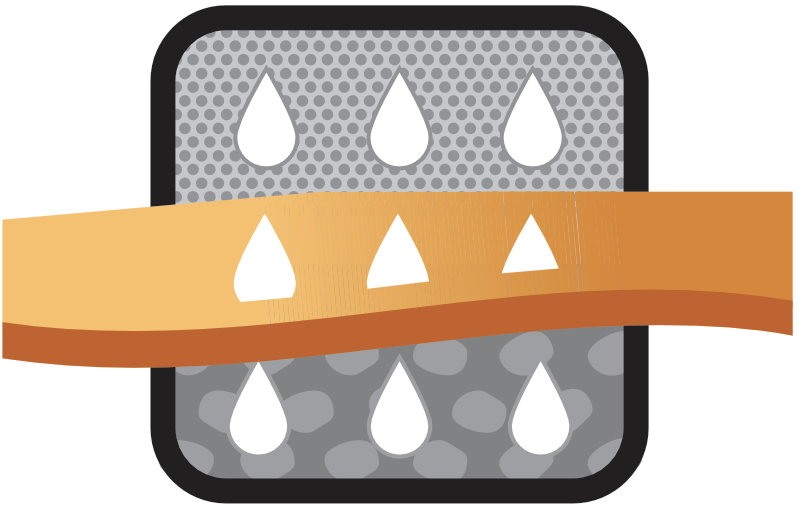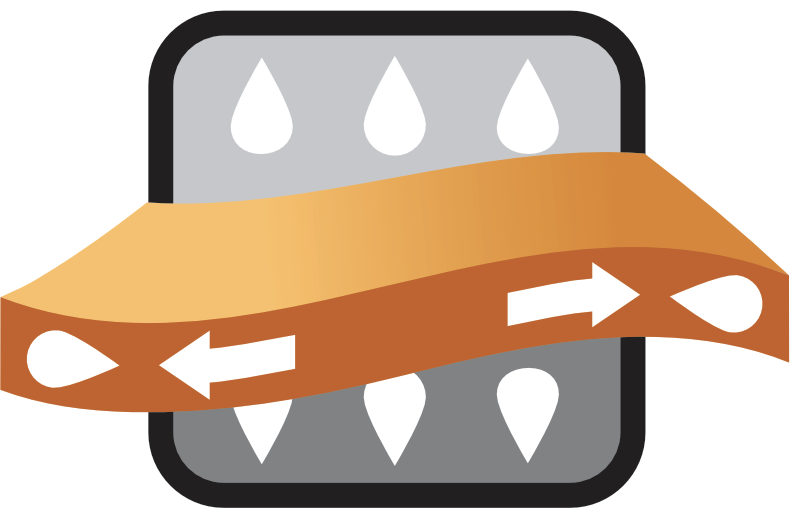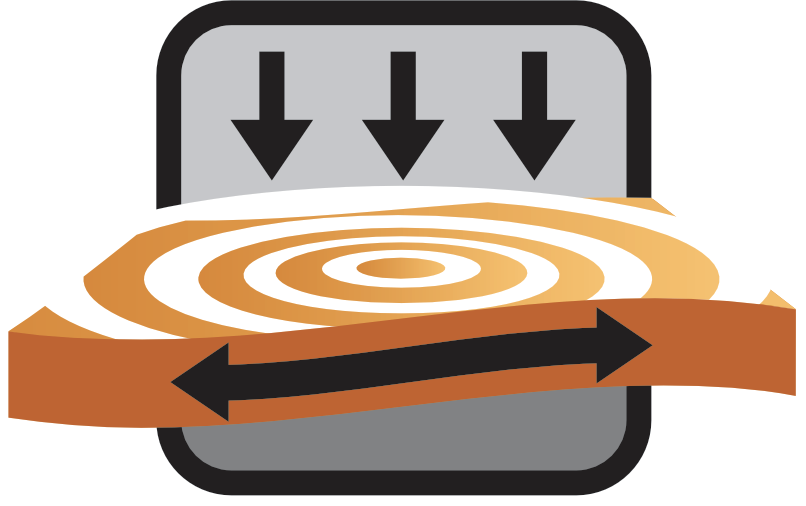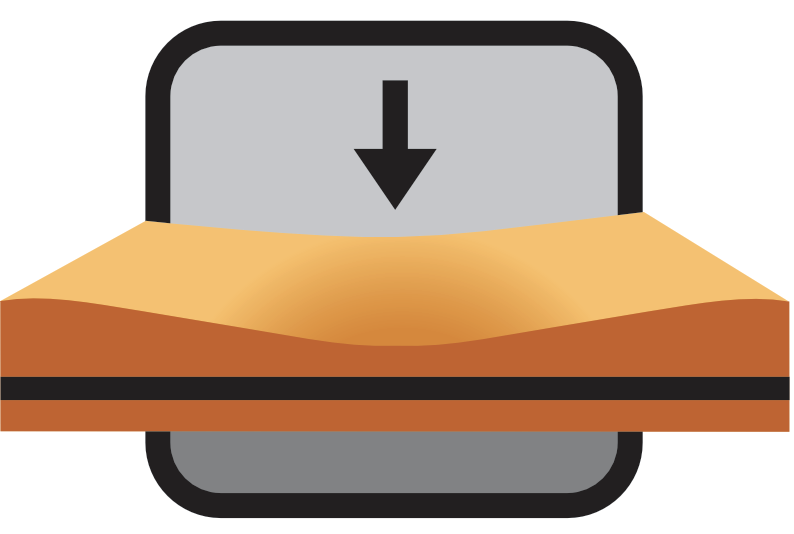
SEPARATION
The geotextile, when it performs a separation function, is placed between two very dissimilar soils in terms of their grain size, one fine and the other coarser, and is intended to preserve the integrity and performance of each of the materials.
This function is mainly exploited for pavements such as tracks or roads with light traffic, as well as for capping layers, railway tracks and under embankments on compressible soil.

FILTRATION
A geotextile acting as a filter must allow the passage of water perpendicular to its plane, but not that of soil particles. The geotextile performing this function must be more permeable than the soil to be filtered. Thus, filtration is a compromise between the internal erosion of the soil by loss of fine particles and the clogging of the filter which can cause an increase in pore pressure that is harmful to the structure.
This function is mainly sought to protect drains against clogging, whether they are of a granular, tubular or geotextile nature. This function can also be sought for the protection of the banks against the wake in this case the geotextile is placed under a rockfill.

DRAINAGE
When used as a drain, a geotextile allows flow in its laying plane. In this case, the geotextile is likened to a drain capable of dissipating pore pressures, collecting and directing fluids towards an outlet. This function also assumes the existence of a filter, geotextile or other, limiting the entrainment of particles of ground.
As geotextiles are in the form of sheets, the contact surface with the soil to be drained is large and therefore their possibility of water collection is important. This use may in particular relate to drainage under foundations, under backfill (on compressible soil), in the body of earth dams, between soil and a structure such as a vertical wall or tunnel or in association with a geomembrane.

RENFORCEMENT
The geotextile used in reinforcement improves the mechanical resistance of a soil mass in which it is included. The geotextile improves both the tensile strength of the mass and its ability to deform before failure.
Reinforcement can also relate to the absorption of stresses on another element or on a weak interface. This is the case when covering a geomembrane laid on a slope with a layer of soil; there may be ruin either by tensile rupture of the geomembrane, or by sliding of the soil layer. In this case, a geotextile placed between the geomembrane and the ground allows the absorption of the stresses.

EROSION
In this case, the geotextile limits the movement of soil particles on the surface, movements caused by water or wind. Several techniques are used for erosion control. A relatively open geotextile will maintain a layer of soil on the slope (shallow to deep layer), a closed geotextile will act as a protective mattress. The fight against erosion by geotextiles is generally compatible with revegetation objectives.
Ces deux techniques sont souvent associées. La protection est alors principalement assurée par des produits apparentés (fibres végétales, …) et concerne : Les torrents ou ouvrages hydrauliques particuliers soumis à un écoulement turbulent ; Les côtes soumises à l’érosion maritime ; Les pentes, talus ou plates-formes exposés à l’érosion pluviale.

PROTECTION
A sensitive element, such as a geomembrane, is likely to be damaged by punching elements (coarse materials), by dynamic or static effect. Interposed between a sensitive element and punching elements, the geotextile provides a protective function.
